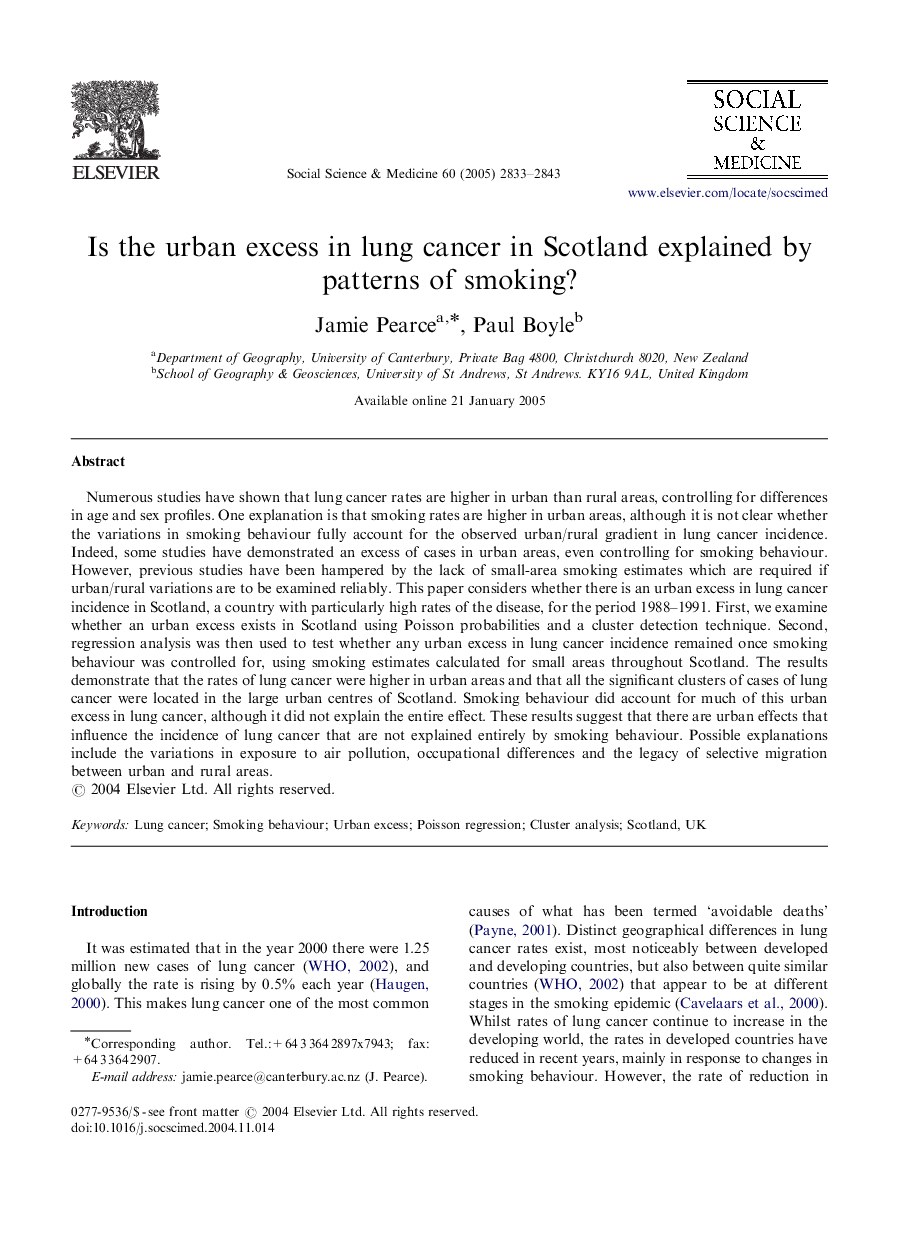| Article ID | Journal | Published Year | Pages | File Type |
|---|---|---|---|---|
| 954654 | Social Science & Medicine | 2005 | 11 Pages |
Numerous studies have shown that lung cancer rates are higher in urban than rural areas, controlling for differences in age and sex profiles. One explanation is that smoking rates are higher in urban areas, although it is not clear whether the variations in smoking behaviour fully account for the observed urban/rural gradient in lung cancer incidence. Indeed, some studies have demonstrated an excess of cases in urban areas, even controlling for smoking behaviour. However, previous studies have been hampered by the lack of small-area smoking estimates which are required if urban/rural variations are to be examined reliably. This paper considers whether there is an urban excess in lung cancer incidence in Scotland, a country with particularly high rates of the disease, for the period 1988–1991. First, we examine whether an urban excess exists in Scotland using Poisson probabilities and a cluster detection technique. Second, regression analysis was then used to test whether any urban excess in lung cancer incidence remained once smoking behaviour was controlled for, using smoking estimates calculated for small areas throughout Scotland. The results demonstrate that the rates of lung cancer were higher in urban areas and that all the significant clusters of cases of lung cancer were located in the large urban centres of Scotland. Smoking behaviour did account for much of this urban excess in lung cancer, although it did not explain the entire effect. These results suggest that there are urban effects that influence the incidence of lung cancer that are not explained entirely by smoking behaviour. Possible explanations include the variations in exposure to air pollution, occupational differences and the legacy of selective migration between urban and rural areas.
